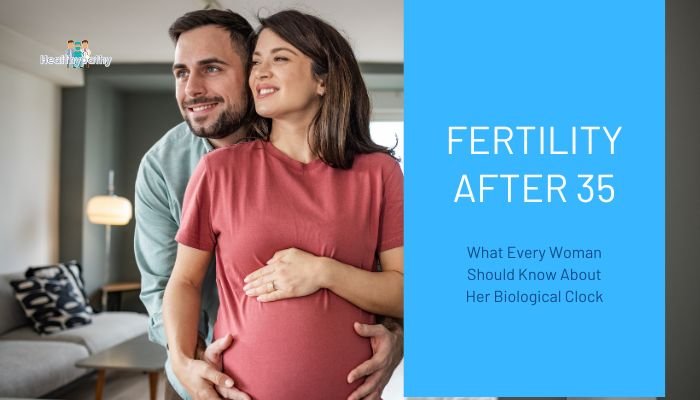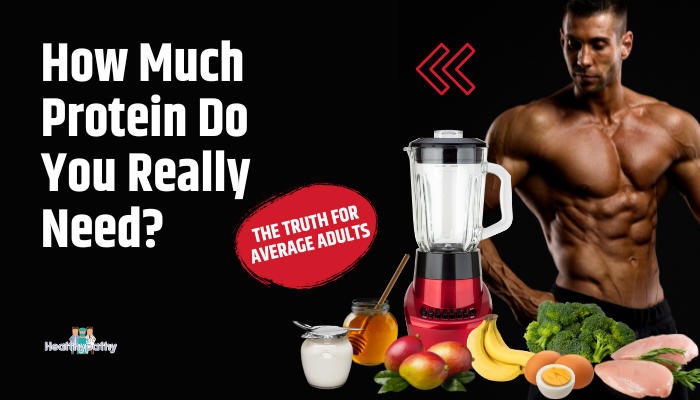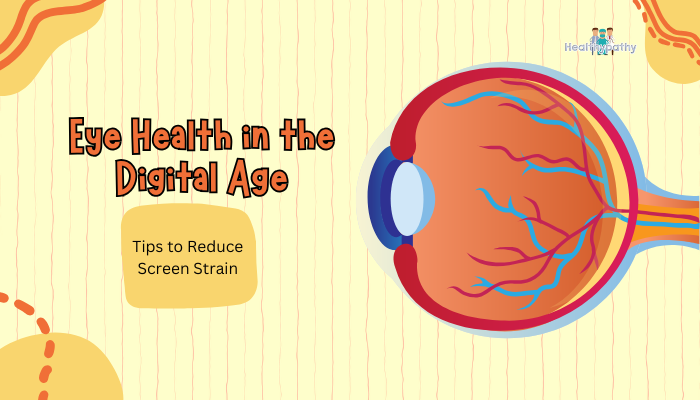Introduction
Many women today are choosing to have children later in life. Advancements in education, career opportunities, financial planning, and personal goals often lead to delaying motherhood until the mid-30s or beyond. Although this decision can bring many advantages—such as enhanced stability and readiness—the natural decline in fertility after age 35 is a biological process that may affect the path to parenthood.
The phrase “biological clock” reflects the reality that, as a woman ages, both the quantity and quality of her eggs decrease. While a healthy lifestyle can help support fertility, no amount of positive habits can fully halt the age-related drop in ovarian reserve. This can lead to longer times to conceive, higher miscarriage rates, and increased risks of complications during pregnancy.
Fortunately, a wide range of fertility evaluations and treatments can offer possibilities for women seeking pregnancy after 35. Understanding these options and adopting healthy routines can improve the odds of a successful outcome.
This article explains the science behind a woman’s biological clock, highlights the main factors influencing fertility after 35, and covers diagnostic tools and interventions that may help. It also explores emotional challenges, mental health considerations, and tips for seeking professional support. By getting the facts and planning proactively, women can make informed decisions about when and how they choose to expand their families.
The Biology of Fertility and Ovarian Reserve
Age and the Egg Supply
Each woman is born with a finite supply of eggs, also known as oocytes. Before birth, the developing female fetus carries millions of eggs in her ovaries, but that number decreases rapidly over time. By the onset of puberty, only a fraction of these remain, and the supply continues to drop with each passing year. This loss happens regardless of whether a woman uses hormonal contraception, breastfeeds, or even experiences pregnancy.
The decline in egg quantity is just one factor. Egg quality also diminishes with age, which can result in more chromosomal abnormalities. These abnormalities may heighten the risk of miscarriage or lead to increased odds of genetic conditions in offspring. A woman’s late 20s to early 30s often marks a peak in fertility. After 35, the process of egg depletion and quality decline intensifies. By the early 40s, conceiving naturally becomes significantly more challenging.
Ovarian Reserve Explained
The term “ovarian reserve” refers to the number and health of a woman’s remaining eggs in her ovaries. While every woman’s situation differs, in general:
- Ovarian reserve drops steadily each year.
- The proportion of chromosomally normal eggs declines, driving up miscarriage rates.
- Each menstrual cycle, a group of follicles develops. One follicle usually dominates and releases a mature egg, while the rest of that group degenerates.
Because the rate of decline accelerates with age, women over 35 typically see greater fluctuations in cycle regularity and a steeper drop in monthly chances of conception. Understanding ovarian reserve through tests such as anti-Müllerian hormone (AMH) measurements can guide women’s choices about family building or fertility preservation.
The Impact of Age on Conception Odds
Fertility experts often cite general statistics for how quickly women might conceive at different ages:
- Late 20s to Early 30s: Many couples conceive naturally within 12 months of trying, with about a 20–25% chance per month for a healthy woman.
- Mid to Late 30s: Monthly conception chances shrink to around 10–15%. More couples require longer periods to conceive, and they face a higher risk of complications such as miscarriage.
- Early 40s: Conception odds drop to single-digit percentages, and the chance of a successful pregnancy without intervention is considerably lower.
These are average figures. Some 38-year-olds conceive within a few months, while some 30-year-olds may struggle. Nonetheless, the overall trend reveals age’s consistent role in diminishing fertility potential and elevating the risk of pregnancy loss.
Key Factors Affecting Fertility After 35
Lifestyle Influences
Certain habits and choices can play a meaningful part in how readily a woman over 35 conceives:
- Weight and Nutrition
- Body Mass Index (BMI): Both underweight and overweight states can disrupt hormone regulation, menstrual cycles, and ovulation.
- Balanced Diet: High intake of fruits, vegetables, whole grains, and moderate protein can help maintain stable energy levels. Some suggest that including antioxidants, such as those from berries or leafy greens, may support reproductive health.
- Physical Activity
- Moderate Exercise: Regular, gentle activities like walking, yoga, or light strength training may enhance blood flow and maintain overall fitness.
- Excessive Exercise: Intense workouts can alter menstrual patterns, particularly in combination with very low body fat.
- Alcohol and Smoking
- Smoking: Cigarette usage accelerates egg loss and is consistently linked to earlier menopause and reduced fertility.
- Alcohol: Heavy alcohol intake can disrupt hormone patterns and reduce conception odds. Occasional social drinking may pose less risk, but moderation is essential.
- Stress Levels
- Hormonal Effects: Chronic stress can raise cortisol, which might interfere with reproductive hormone balance.
- Coping Mechanisms: Meditation, gentle stretching, or short breaks can potentially reduce tension. Though stress alone rarely causes infertility, it may worsen underlying issues.
Medical Conditions and Past Surgeries
For women over 35, preexisting conditions can combine with age-related declines to affect fertility:
- Polycystic Ovary Syndrome (PCOS)
- Characterized by insulin resistance and irregular menstrual cycles, PCOS may worsen with age if left untreated. Women can experience diminished fertility.
- Endometriosis
- Tissue that behaves like uterine lining grows outside the uterus, creating painful adhesions that disturb egg release, tubal function, or implantation.
- Fibroids
- Benign tumors in the uterus can impede implantation or distort the uterine cavity, although many fibroids do not significantly hamper fertility unless they grow large or intrude upon the endometrial space.
- Thyroid Disorders
- Both hypothyroidism and hyperthyroidism may disrupt ovulation. Correct diagnosis and treatment (e.g., synthetic thyroid hormone) can help restore more regular cycles.
- Surgical History
- Past pelvic or abdominal operations could lead to scarring or adhesions that block the fallopian tubes, hamper egg movement, or affect uterine lining receptivity.
Consulting with a reproductive endocrinologist or gynecologist helps clarify whether any of these issues might be hindering fertility. A tailored treatment approach can address the specific combination of age-related decline and medical conditions.
Partner Factors
Conceiving involves two individuals, so the male partner’s fertility status is also crucial. Sperm quality generally declines more slowly than egg quantity, but advanced paternal age can increase the likelihood of genetic abnormalities in sperm. Lifestyle, medical conditions, and certain habits (like smoking or excessive alcohol use) impact male fertility. In couples trying to conceive, both partners benefit from evaluations and supportive changes.
Understanding the Risks of Later Pregnancy
Miscarriage Rate and Chromosomal Abnormalities
As a woman ages, chromosomal errors within her eggs become more common. This raises the risk of miscarriages, especially in the first trimester. While many miscarriages result from random chromosomal issues not linked to the mother’s actions, the rate still climbs with age. Women over 40 can have up to a 40–50% chance of miscarriage per pregnancy. Additionally, the incidence of conditions like Down syndrome increases significantly after 35.
Gestational Complications
Pregnancies occurring after 35 carry a higher incidence of certain health problems, such as:
- Gestational Diabetes: Occurrence is more frequent in older mothers, partly due to insulin resistance that can develop with aging or higher body weight.
- Hypertension and Preeclampsia: Blood pressure complications may affect placental function and can endanger both mother and child if severe.
- Placental Issues: Placenta previa and placental abruptions appear more often in older age groups, though individual risk varies.
Good prenatal care, including routine blood tests, ultrasound checks, and close monitoring of blood pressure or blood sugar, reduces these risks. Specialists often encourage vigilant checkups to detect any signs of complications early.
Delivery and Birth Outcomes
Some older mothers face higher chances of requiring an induction of labor, instrumental delivery, or cesarean section. The baby’s well-being is generally the top priority, and healthcare teams may respond quickly to any signs of fetal distress or complications with the mother. Nonetheless, many women over 35 have healthy pregnancies and give birth naturally. Careful planning and open communication with obstetric providers help optimize outcomes.
Evaluating Fertility After 35: Tests and Assessments
Anti-Müllerian Hormone (AMH) Test
The AMH test measures the level of a hormone secreted by ovarian follicles. Higher AMH typically suggests a larger pool of immature eggs, indicating robust ovarian reserve, while lower AMH points to a diminished reserve. AMH can serve as a useful guideline for how aggressively or quickly a couple may need to pursue fertility treatment. It is not an absolute predictor of fertility but can be combined with other assessments.
Follicle Stimulating Hormone (FSH) and Estradiol
In the early follicular phase (often day 2 or 3 of the menstrual cycle), doctors may test blood levels of FSH and estradiol. FSH helps control egg development; high FSH on day 3 can signal lower ovarian reserve because the body produces more FSH to try to recruit the fewer remaining follicles. Estradiol must also be at an appropriate level to indicate healthy egg development. These tests form part of a broader fertility workup.
Ultrasound Examinations
An antral follicle count (AFC) via transvaginal ultrasound can visualize how many small follicles are present in the ovaries at the start of a cycle. A higher AFC usually corresponds to better ovarian reserve. Ultrasounds also identify potential physical issues like large cysts, fibroids, or uterine structural anomalies. By checking the uterus and ovaries, clinicians can see if any mechanical factors might obstruct conception.
Hysterosalpingogram (HSG)
An HSG involves introducing a dye into the uterine cavity and taking X-ray images. The test reveals whether the fallopian tubes are open or blocked. Blockages can result from scar tissue, endometriosis lesions, or past infections like pelvic inflammatory disease. Knowing the tubal status helps fertility specialists decide between treatments like intrauterine insemination (IUI) or in vitro fertilization (IVF).
Semen Analysis for the Male Partner
Evaluating sperm count, motility, and morphology is critical when couples face fertility challenges. Sometimes, advanced paternal age or underlying factors—like varicocele or hormone imbalance—affect sperm health. Even after 35, many women with normal fertility might struggle to conceive if the male factor is suboptimal. Addressing both partners’ fertility data yields the most accurate plan.
Treatment Paths and Family-Building Options
Trying Naturally with Timed Intercourse
For some women over 35, a few months of timed intercourse may be enough to conceive, especially if no significant risk factors exist. Optimizing the chance of fertilization involves:
- Tracking Ovulation
- Methods include ovulation predictor kits, basal body temperature charts, or fertility-monitoring apps.
- Understanding ovulation timing ensures intercourse occurs when the egg is most likely to be fertilized.
- Regular Intercourse
- Engaging in intercourse every 2–3 days around the fertile window can help.
- Relying too heavily on precise timing can sometimes add pressure and stress.
- Lifestyle Adjustments
- Maintaining a moderate weight, limiting caffeine intake, and prioritizing sleep may improve reproductive function in subtle ways.
Most clinicians advise a period of trying to conceive naturally for at least 6 months if the woman is 35 or older, as fertility dips faster in this age group. If conception does not occur within 6 months (or sooner if known factors like blocked tubes exist), seeking help from a fertility specialist can clarify next steps.
Medical Therapies and Stimulation
In situations where irregular ovulation occurs—such as with mild PCOS—doctors may prescribe ovulation induction agents like clomiphene citrate or letrozole. These medications encourage the ovaries to produce and release eggs more reliably. Women who respond well can attempt timed intercourse or IUI.
- Oral Medications
- Clomiphene and letrozole regulate hormone signals, helping follicles mature.
- Side effects can include mood swings, hot flashes, or headaches.
- Injectable Gonadotropins
- Contain hormones like FSH or human menopausal gonadotropin (hMG).
- Stimulate multiple follicles for possible IUI or IVF.
- Regular ultrasound monitoring prevents over-stimulation.
Intrauterine Insemination (IUI)
IUI involves placing concentrated sperm directly into the uterus around the time of ovulation. The approach can help if cervical factors exist or the couple prefers a more structured method. Combined with mild ovarian stimulation, IUI can improve chances for women who have adequate ovarian reserve but minor issues with egg release or sperm transport.
In Vitro Fertilization (IVF)
IVF can be an effective solution for age-related fertility decline, tubal blockages, male factor infertility, or unexplained fertility problems. The process entails:
- Ovarian Stimulation
- Medications prompt the ovaries to mature multiple eggs in one cycle.
- Ultrasounds track follicle growth.
- Egg Retrieval
- A minor procedure collects the mature eggs from the ovaries under ultrasound guidance.
- Fertilization in the Lab
- Eggs are combined with sperm. If sperm issues are present, intracytoplasmic sperm injection (ICSI) can be used.
- Fertilized eggs develop into embryos.
- Embryo Transfer
- One or more embryos are transferred to the uterus.
- Any extra embryos can be frozen for potential future use.
Women over 35 have lower success rates per cycle than younger women, partly due to egg quality. Preimplantation genetic testing (PGT) can screen embryos for chromosomal abnormalities, potentially boosting the odds of a healthy pregnancy if enough embryos are available for testing. IVF is expensive and demanding, but it offers the highest success rate among assisted reproductive techniques for women facing age-related challenges.
Egg Freezing and Preservation
Some women in their early to mid-30s choose elective egg freezing if they are not yet ready for motherhood but wish to preserve younger eggs. While freezing eggs at 35 does not guarantee a future pregnancy, it can increase possibilities if fertility significantly declines later. The procedure resembles an IVF cycle, except that retrieved eggs are vitrified (flash-frozen) for later fertilization.
Egg freezing can be a viable choice for:
- Women focusing on career or personal growth.
- Those lacking a suitable partner but still desiring biological children.
- Individuals with medical conditions (e.g., cancer needing chemotherapy) that threaten ovarian reserve.
Emotional and Psychological Aspects
Stress, Guilt, and Societal Pressure
Many women who start trying to conceive after 35 face:
- Stress About Time: Fears that they may run out of fertile years can cause ongoing worry.
- Guilt or Regret: Wondering if delaying motherhood was a mistake. Social remarks about “waiting too long” can add to this burden.
- Work-Life Balance: Pressure to maintain professional roles and personal goals while tackling fertility treatments or frequent medical appointments.
These emotions can intensify as each menstrual cycle passes without success. Partners might also experience tension or feel powerless in the face of rising stress.
The Role of Counseling and Support Groups
Speaking with therapists who understand fertility challenges can help in dealing with disappointment, frustration, or anxiety. Support groups—virtual or in-person—offer a space to connect with individuals undergoing similar experiences. Sharing stories relieves isolation and provides practical tips for coping with medical procedures, insurance hurdles, or emotional lows.
Maintaining Mental Well-Being
- Set Realistic Expectations: Understand that each cycle’s odds may be lower than in younger years, but success is still possible over multiple attempts.
- Celebrate Milestones: Completing a thorough fertility evaluation, starting medication, or retrieving eggs can each mark progress, even if a pregnancy hasn’t yet occurred.
- Practice Stress Management: Short walks, gentle stretching, or simple breathing exercises can minimize daily anxieties.
- Keep Communication Open: Partners who frequently check in with each other about feelings or changing goals can foster a supportive environment throughout the journey.
When to Seek a Fertility Specialist
General Recommendations
The conventional guideline urges women over 35 who haven’t conceived after 6 months of regular, unprotected intercourse to see a fertility specialist. That timeframe drops to 3 months or less if known fertility barriers exist, like PCOS or blocked tubes. Women over 40 typically receive prompt referrals for fertility assessments and possible assisted reproductive treatments.
Early Consultation Benefits
- Time-Sensitive Decision-Making: Detailed knowledge of ovarian reserve helps shape realistic expectations.
- Customized Plans: Whether it’s IVF, IUI, or fertility preservation, a specialist tailors therapy to each individual’s condition.
- Monitoring Underlying Issues: Women with endometriosis, fibroids, or autoimmune disorders need specialized oversight to manage disease progression or mitigate flare-ups.
- Optimizing Overall Health: A fertility specialist or reproductive endocrinologist can recommend dietary improvements, weight management, or safe exercise plans that complement medical interventions.
Postponing a consultation might diminish the range of effective solutions, as age-related changes can speed up. For some, exploring fertility clinics earlier can spare regret or provide peace of mind, even if they conceive spontaneously afterward.
Staying Proactive and Informed
Regular Checkups
Seeing an obstetrician or gynecologist once a year helps track reproductive health. Even in the absence of pressing fertility concerns, routine visits can detect developments like fibroid growth, abnormal hormonal changes, or silent infections. Early identification of potential problems maximizes the chance for effective interventions if or when a woman decides to conceive.
Monitoring Menstrual Cycles
A shift in cycle length or more severe menstrual symptoms may indicate changes in ovarian reserve or the onset of conditions like uterine fibroids. Women can track:
- Cycle Length: Are periods shorter, longer, or more erratic?
- Flow Patterns: Heavier bleeding or more painful cramps can signal new fibroids or endometrial problems.
- Premenstrual Experiences: Sudden changes in PMS severity or mood swings might reflect hormonal shifts.
Logging these observations, either on paper or through a mobile app, provides valuable information for doctors.
Continuing Education and Advocacy
Fertility science evolves rapidly, with new treatments and diagnostic tools emerging. Staying updated via reputable online sources, medical journals, or support networks can empower women. This includes:
- Learning about expansions in preimplantation genetic testing.
- Discovering new protocols for egg freezing that can better preserve egg quality.
- Adopting advanced maternal age screening options for fetal well-being (such as noninvasive prenatal testing).
No single approach to fertility after 35 fits all, so knowledge and self-advocacy lead to more informed decisions.
Conclusion
Fertility after 35 involves intricate biological changes that reduce the quantity and quality of eggs, as well as raise miscarriage risks. Yet, many women still conceive and deliver healthy children well into their late 30s and early 40s. By understanding how aging affects ovarian reserve, monitoring for medical conditions, and adopting balanced lifestyle habits, women can strengthen their chances of a successful pregnancy.
Diagnostic tools—including hormone tests, imaging studies, and semen analyses—can clarify potential hurdles. Depending on the results, treatments range from timed intercourse to advanced techniques like IVF or egg freezing. Emotional well-being also matters. Communicating openly with partners, attending counseling, or joining support groups can mitigate the psychological strains of delayed childbearing.
Ultimately, no method can guarantee pregnancy, but being proactive offers the best path toward making well-informed choices. When challenges arise, reproductive medicine provides an array of family-building routes. Knowledge, realistic planning, and specialized care enable women over 35 to approach their fertility journey with greater confidence and a stronger sense of control.
References
- American Society for Reproductive Medicine. Female age-related fertility decline. Fertil Steril. 2020;113(6):1135–1143.
- Broekmans FJ, Knauff EA, te Velde ER, Macklon NS, Fauser BC. Female reproductive ageing: current knowledge and future trends. Trends Endocrinol Metab. 2007;18(2):58–65.
- Practice Committee of the American Society for Reproductive Medicine. Diagnostic evaluation of the infertile female: a committee opinion. Fertil Steril. 2015;103(6):e44–e50.
- Roser M, Ortiz-Ospina E. Fertility rate. Our World in Data. 2017; https://ourworldindata.org/fertility-rate.
- Cimadomo D, Rienzi L, Garcia-Peiró J, et al. The impact of maternal age and nongenetic factors on chromosomal anomalies in female gametes. Expert Rev Mol Diagn. 2018;18(5):465–471.
- de Kat AC, Broekmans FJ, Laven JS, Verschuren WM, van Gils CH, Fauser BC. Anti-Müllerian hormone as a marker of ovarian reserve in relation to cardiometabolic health: potential reflections of female vitality. Maturitas. 2015;80(3):251–257.
- Balasch J, Gratacós E. Delayed childbearing: effects on fertility and the outcome of pregnancy. Curr Opin Obstet Gynecol. 2012;24(3):187–193.
- Ubaldi FM, Capalbo A, Colamaria S, et al. Preimplantation genetic testing for aneuploidies: which indicators lead to the best clinical outcomes in advanced maternal age? Fertil Steril. 2017;108(2):258–263.
- Smith JF, Eisenberg ML, Millstein SG, et al. Fertility treatments and outcomes among couples seeking fertility care: data from a prospective fertility cohort in the United States. Fertil Steril. 2011;95(1):79–84.e1.
- Lamazian G, Gwendolen T, Randolf A, et al. Reproductive outcomes with endometriosis in advanced maternal age: experiences from a fertility clinic. J Reprod Med. 2022;67(5):253–259.
- ESHRE Task Force on Ethics and Law. Oocyte cryopreservation for age-related fertility loss. Hum Reprod. 2020;35(11):2559–2564.
- Deatsman S, Vasilopoulos T, Rhoton-Vlasak A. Age and fertility: a study on female ovarian reserve. J Womens Health (Larchmt). 2016;25(9):954–960.






